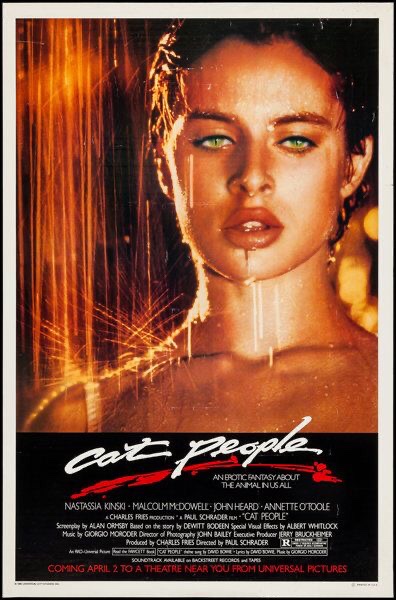
It was always going to be a hard sell remaking Godard’s seminal cultural/cinematic landmine À bout de souffle (1960). For some reason, director Jim McBride and screenwriter L.M. Kit Carson thought it would be a nifty idea to give it a try, with red-hot Richard Gere in the Belmondo role and French softcore actress Valérie Kaprisky replacing Jean Seberg.
No one could replace Godard and Truffaut, however; no one shove Belmondo or Seberg into the shadows. Gere was a huge box office star at that moment, having scored big the previous year in the not-too-shabby 1982 romantic drama An Officer and a Gentleman. He smoldered Brando sex appeal and projected a cocky attitude that clicked with audiences, making him the perfect choice for the anti-social lead. But he was no Belmondo, the mush-faced international superstar that epitomized cool, effortless masculinity for his generation.
Kaprisky, a relative unknown, was a whole other matter. She’d done a few parts beforehand, most notably the skin flick Aphrodite (1982), but Kaprisky’s onscreen appeal had nothing to do with her acting. Her casting seemed more predicated on her casualness with onscreen nudity and sex scenes and the fact that she was French, whereas Seberg was notably American in the original movie. Honestly, the less said about Kaprisky’s performance the better. She’s the weak link in the whole thing, despite her and Gere’s onscreen sexual connection. Again, acting has nothing to do with it.
Breathless shouldn’t work as well as it does. But there’s something overwhelmingly seductive and slyly clever in its jumpy, coke-doomed remake hustle and cartoonish lovers-on-the-run refractions; an image within an image within the memory of a dying medium. Godard’s original was a reflection on and a dismantling of Hollywood genre clichés. It celebrated studio filmmaking while setting fire to the celluloid. Hollywood cinema reimagined by French film critics designed to overthrow established narrative that demanded total authority to plot, logic, character. There will be no God before Hollywood.
McBride’s and Carson’s attempt is no revolution. But it snaps and Gere is fun to watch in all his psychotic, narcissistic self-love. Shifty, sleazy, and aggressively charming in that bullying, predatory way that defined a lot of pop culture male iconography of the late 20th century, Gere exudes a manic malice. He pretty much abandoned that persona by the time Pretty Woman jolted his career into a new phase, tempering the impulsiveness for a more content, reliable, reassuring sex appeal.
Obsessed with the Silver Surfer, rockabilly, and sex, amoral Jesse (Gere) speeds all day and night pining for the next thrill. Nothing satisfies, however, like what architect student Monica (Kaprisky) does to him. Jesse flees Las Vegas in a stolen Porsche, accidentally kills a cop, and returns to Los Angeles (where he’s not wanted) to hunt down his newest prey. Monica clearly sees him as unstable, but if it wasn’t for cinematic lust over logic we’d never have movies, so she joins him in his downward spiral. The trick is enjoying the rush without going down with him. Seberg found her way out before Belmondo hit detonate. Kaprisky genuinely looks confused in all of her non-sex scenes, so McBride and Carson figure things out for her.
The ending is great shape-shifting the original, and Gere’s final decisive move is heroically deranged. A suicidal act mirroring all of the countless cinematic losers and psychotic anti-heroes that have fueled the adolescent fever dreams of teenage boys since movies began, since sex began, since the world began.
No wonder Tarantino loves this movie so much. Dig it.








